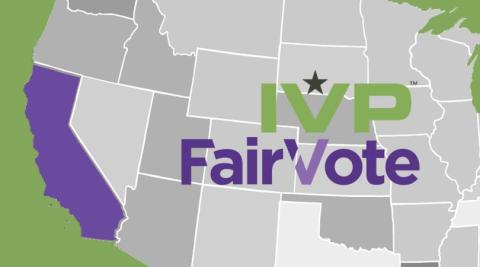National Election Reform Groups, the Independent Voter Project and FairVote, are advocating for a primary that advances the “top-four” candidates instead of just two.
The groups believe doubling the choices by advancing four candidates out of the primary, allowing write-in candidates, and enacting ranked choice voting to give voters more power, avoids vote-splitting, and ensures majority rule, is the best-case scenario for voters and voters rights.
In addition to this effort, the National Association of Nonpartisan Reformers and California Forward have been working on new election models that maintain and advance voter-centric reforms.
Dan Howle of IVP and Rob Richie of FairVote penned the op-ed below:
Top Four Primaries and Ranked Choice Voting
By Dan Howle and Rob Richie
Our broken politics and changing electorate demand creativity, persistence and new reform coalitions. In that spirit we are writing to advance voter-centric election through ranked choice voting.
We have worked for electoral reforms and voting rights for years and serve together on the board of the National Association for Nonpartisan Reformers. Dan is executive director of the Independent Voter Project and was a chief architect of California’s nonpartisan primary election, which voters adopted in the form of Proposition 14 in 2010. Rob directs FairVote, which has been the nation’s leading proponent of ranked choice voting, including as it passed in California cities like Oakland and San Francisco.
Dan sees California’s top-two nonpartisan primary system as achieving its core objectives:
- Every voter should have an equal opportunity to vote for the candidates of their choice, regardless of the voter’s political preferences;
- Every candidate for elective office should have the same requirements to appear on the ballot; and
- Elections should be more competitive.
Looking at this month’s primary in California helps underscore how these goals have been met. Every candidate secured ballot access in the same way, and every voter could pick a candidate of their choice regardless of party label in each primary contest. Most elections had more than two choices, and all avoided the segregation by party that in the old system had left so many primaries uncontested or lopsided. No incumbent today can focus only on the base of their party because they know they might need to earn a general election majority against an independent or someone of their own party.
Focused on voter experience in general elections, Rob’s priorities include:
- Voters should have real choices in November, with a spectrum of options that enliven debate and reflect voters’ spectrum of views.
- Voters should have their voice matter, with the fullest chance possible to be heard and engage with candidates.
- Voters should earn fair representation, with as many votes counting as possible.
Recent mayoral elections with ranked choice voting (RCV) in Minneapolis and St. Paul in Minnesota and Santa Fe in New Mexico underscore how RCV promotes those goals. Turnout surged over recent elections, with at least five candidates with a range of views in each race. Political debate was unusually substantive and civil. More than four in five voters used their power to rank candidates, and winners earned a majority of the final round vote and greatly increased their vote totals during RCV tallies.
We, the Independent Voter Project and FairVote, have and continue to have our different perspectives and opinions about what is the “best” way to conduct our elections. But at a fundamental level, we agree that elections should serve voters, maximize choice, and broaden our representatives’ accountability.
For that reason we oppose any attempt to restore California’s old system. Its low level of competition was appalling, both in primaries and in general elections. Even when third parties and independents were on the November ballot, the vote-for-one, plurality voting system sidelined them as “spoilers” or “irrelevant.”
The biggest complaints about the nonpartisan primary system are tied to only two candidates advancing from the primary. The practical effect of only advancing two candidates, especially when several candidates are on the ballot, is that some credible candidates may not advance to November. This can leave third parties, independents, and even a major party from having a candidate on the general election ballot.
The Independent Voter Project supported the top-two format, specifically, to ensure that a candidate needs a majority vote to win in November. But we should not, and do not have to, go back to the old, party-centric, and uncompetitive system to expand voter choice, provide more opportunity for third parties and independents, and advance voter-centric reform even further.
Enter the application of ranked choice voting to a primary that advances the “top-four” candidates instead of just two. It’s simple. Double the November choices by advancing four candidates out of the primary, allow write-in candidates, and enact ranked choice voting to give voters more voice, avoid vote-splitting, and ensure majority rule.
Don't be surprised if some party insiders use this year’s elections as a pretext to seek a return California to its old incumbent-friendly system. That isn’t going to fly. Instead we should be talking about model legislation like top-four primaries with ranked choice voting that can help bring voter-centric reform to more states.
About the Authors: Dan Howle executive director of the Independent Voter Project. He served as a staff member and consultant in the state legislature. Rob Richie is president and CEO of FairVote, the nonpartisan reform organization he has led since 1992.
